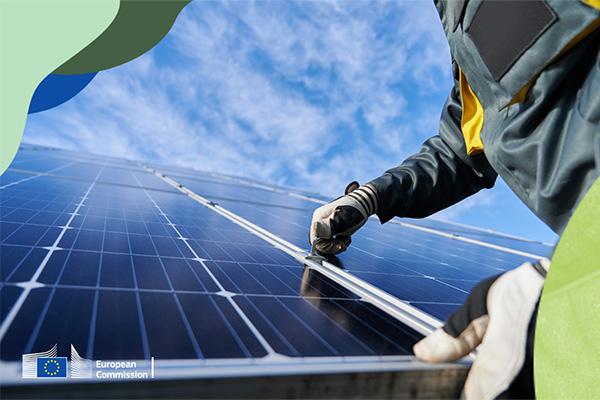
While the EU remains a leader in clean energy research, there is a growing dependence on imports for certain technologies, according to the 2023 report on progress on competitiveness of clean energy technologies. Published this week as part of the 2023 State of the Energy Union Report exercise, the document provides a factual assessment of the competitiveness of the different aspects of the clean energy sector (raw material costs, supply chain issues, skills, research & innovation, and attracting investment). It then considers the competitiveness of the different strategic net-zero technologies (solar, wind, ocean energy, batteries, heat pumps, etc). The report is underpinned by evidence from the Clean Energy Technology Observatory.
EU Commissioner for Energy Kadri Simon said:
'This Competitiveness Progress Report is particularly topical as it provides insights into the main drivers, opportunities and barriers to competitiveness in the EU’s clean energy sector. It also draws attention to the coordinated steps we are taking at EU level to support our industry in meeting the current challenges.'
Despite rising prices due to the peak in energy and material costs in 2022, the report concludes that clean energy technologies remain highly cost competitive in the EU. In 2022, the roll-out rate of wind and solar increased around 50% compared to 2021. Despite this positive trend, the EU’s clean energy manufacturing industry are facing increasing competition from non-European producers. From raw materials to key intermediate components and final clean energy technologies, the report notes that the EU is becoming more dependent on imports from third countries. Over 60% of the global manufacturing capacity for key value chain segments of batteries and solar is located in China. Over 90% of capacity for the wafers and ingots required for solar PV is in China. Even in sectors such as wind energy or heat pumps, where the EU has a strong manufacturing base, EU market shares are falling. (For wind, the Commission has addressed these challenges with the wind package presented earlier this week.)
The report underlines that the European Commission has already taken a number of initiatives to try and address this issue. The Green Deal Industrial Plan, the Net-Zero Industry Act and the Critical Raw Materials Act are all aimed at lowering Europe’s dependence on imports of net-zero technologies, strengthening value chain resilience, and building a strong domestic manufacturing base.
Other issues identified in the report include the need to improve skills, ensure quality jobs and to turn innovation into industrial production. Despite the positive trend in employment, the latest data show that the skills gaps and shortages seen since 2021 may curb growth in the clean energy sector. In 2023, nearly 4 in 5 small and medium-sized companies report it is generally difficult for them to find workers with the right skills. Moreover, while the EU remains a leader in clean energy research, bridging the gap between research and market adoption requires intensified efforts through EU and national programs and clear R&I targets for 2030 and 2050.
Related links
Details
- Publication date
- 25 October 2023
- Author
- Directorate-General for Energy
